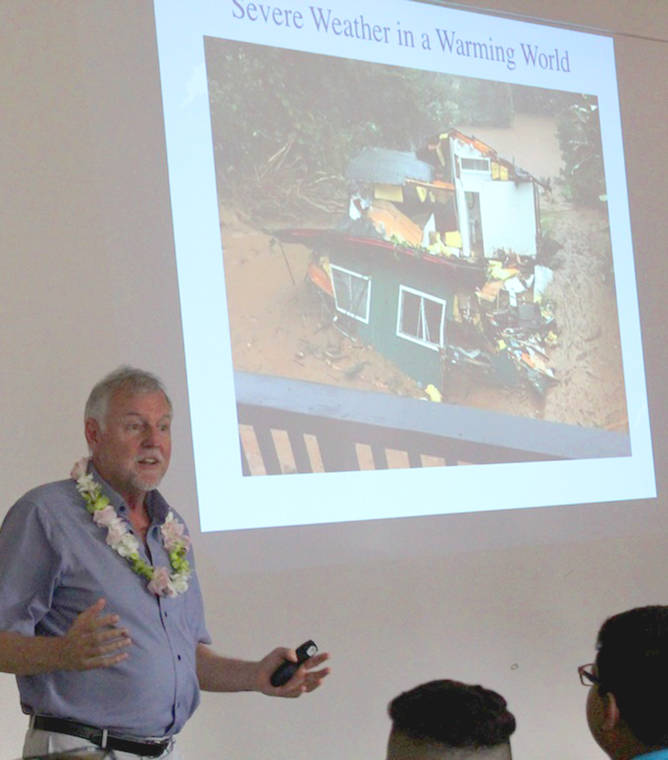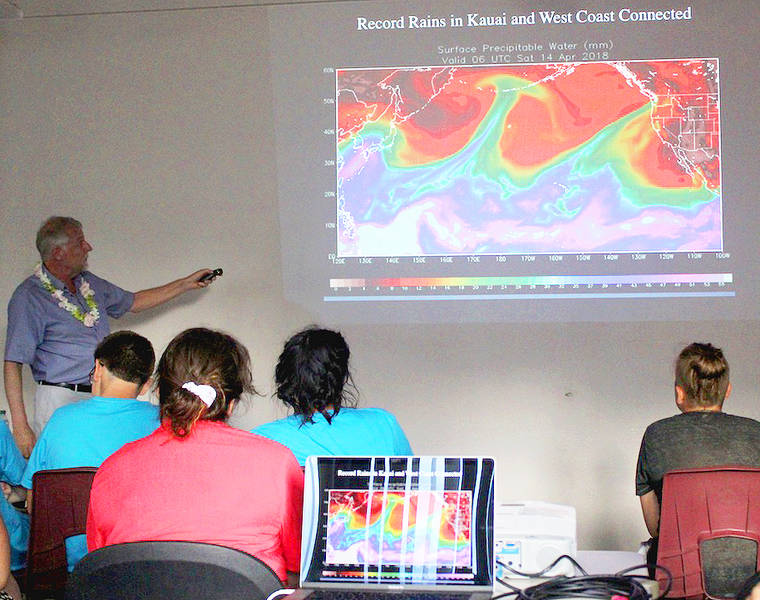LIHUE — Keiki with the new Camp Kahili gathered at the Lihue library on Monday evening to hear about hurricanes.
They were part of a group of about 30 community members who came out to hear about hurricane formation and forecasting from Steven Businger, University of Hawaii professor and chair of the atmospheric sciences department at UH Manoa.
Some, like Janet Kass, were even looking for the latest on how to prep the house for a hurricane.
But they didn’t quite get what they were expecting.
“I want to talk about severe weather in a warming world,” Businger started out the talk, part of “Science @ Your Library”, a program of Hawaii Alliance for Science. “I want to talk about global warming and the issue of climate change.”
Hurricanes were part of the talk, but Businger focused on changing weather patterns and explained the elements that led to extreme weather on Kauai last year.
He started with the April 2018 storm that broke U.S. records for rainfall in a 24-hour period, explaining the storm was so localized because of Kauai’s terrain — particularly the steep mountains and valleys on the North Shore.
“There are these scarps (steep banks and hillsides) catching the flow and lifting it and causing thunderstorms to be more intense,” Businger said.
Those scarps directed the storms straight toward Hanalei, he explained.
Also factoring into that storm was a massive wave of air with a high water vapor content that came through the northwest part of the Mainland.
“There happened to be a tremendous amount of water vapor and Kauai was in the middle of the plume with high water vapor content,” Businger said.
He moved on to weather in February, when a Kona Low chilled temperatures and brought wind through the islands.
“There was a northerly flow of cold air over Kauai, it produced a lot of wind, but didn’t have the same moisture,” Businger said. “There was a lot of beach erosion due to that storm.”
He also pointed out that weather pattern brought record-breaking winds to the top of Mauna Kea and snow was observed on Haleakala at 6,200 feet.
While not specifically about hurricane formation and forecasting, audience members got a broader understanding of how extreme weather behaves from a meteorological standpoint.
It was a learning experience for all the audience members, including the Camp Kahili keiki, many of whom were from California and other areas where hurricanes and extreme weather events occur.
“This is our first year as a camp and we really want the kids to get to know the Hawaii culture, but also we’re focused on science,” said April Cauthron, who was chaperoning the kids on Monday night. “We heard about it (the talk on hurricanes) and it was just what we were looking for.”
•••
Jessica Else, environment reporter, 245-0452 or at jelse@thegardenisland.com.



